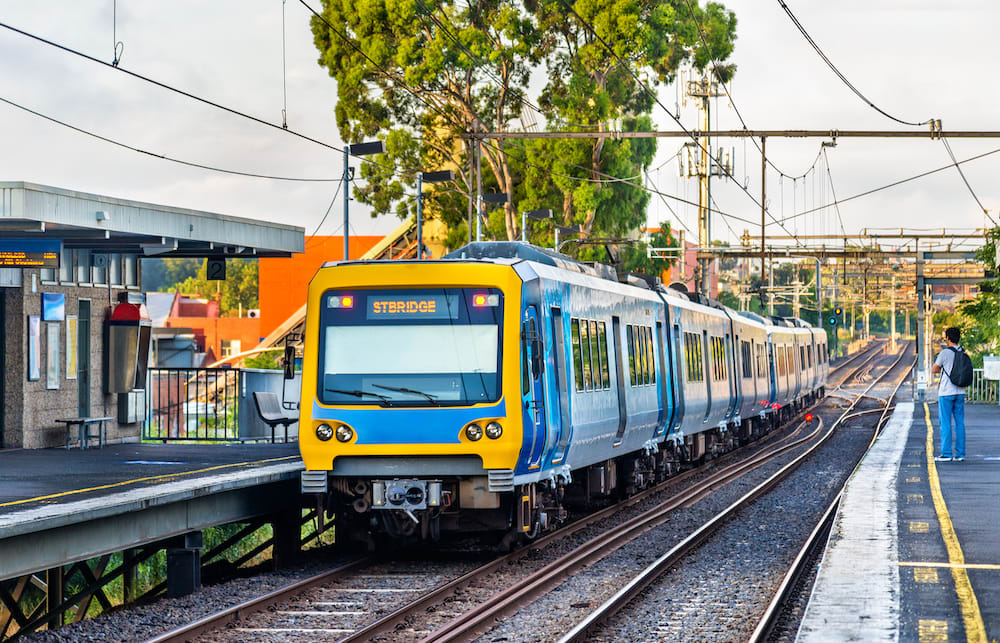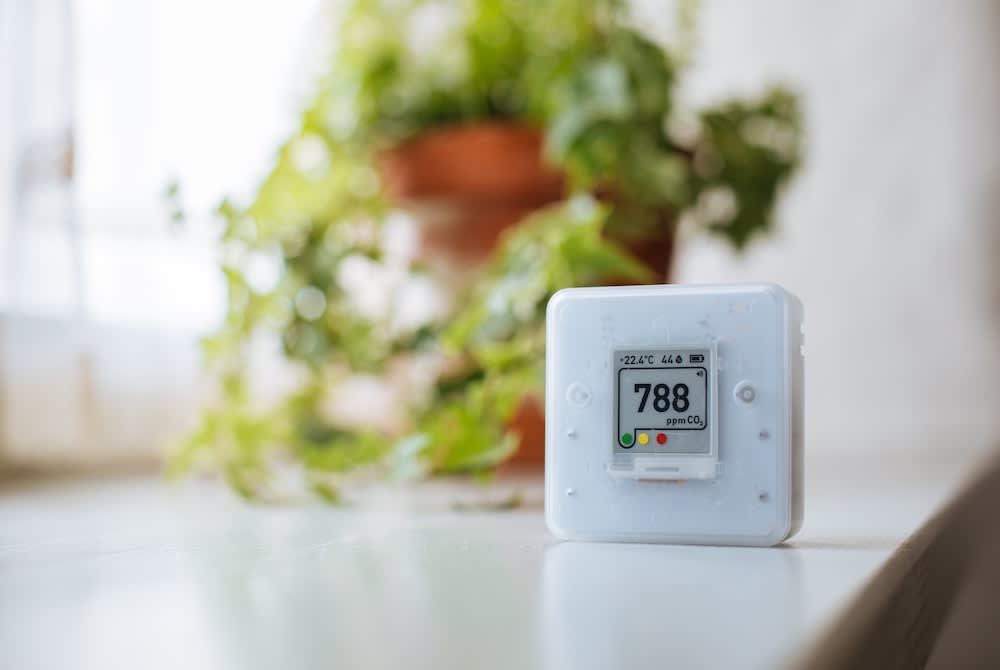- Published 22 Feb 2024
- Last Modified 6 Mar 2024
- 6 min
The Importance of Air Quality Monitors in Enhancing Passenger Comfort in Transit
Explore the vital role of air quality monitors and testers in rail transport, ensuring passenger comfort and health by managing CO2 and particulate matter.

In the dynamic landscape of rail transport, ensuring passenger comfort extends beyond mere convenience — it's a necessity, with air quality being a critical component. The distinct challenges posed by the enclosed nature of rail cars, coupled with varying passenger loads, underscore the importance of vigilant air quality management. In these confined spaces, pollutants such as CO2 and particulate matter are prone to accumulation, directly influencing the overall travel environment and, consequently, impacting passenger well-being. In southern Queensland, air quality monitoring studies around rail systems have shown concerns related to coal dust emissions. As such, these studies highlight the need for continued monitoring to address air quality issues in rail corridors.
This blog aims to explore how air quality monitors measure air quality and address these obstacles. We will discuss how deploying the best air quality monitors and conducting regular air quality checks can effectively mitigate the risks posed by these pollutants, thereby securing a comfortable and health-conscious travel experience in rail transport.

Understanding the Significance of Monitoring CO2 Levels
Monitoring CO2 levels in rail environments is more than just a regulatory compliance measure; it directly influences passenger comfort. Elevated CO2 levels can create an atmosphere that feels stuffy and uncomfortable, diminishing the quality of the travel experience. More critically, prolonged exposure to high CO2 concentrations can pose serious health risks, including headaches, dizziness, and in extreme cases, impaired cognitive function. Advanced air quality monitors that accurately measure these levels are therefore indispensable in rail transport. By keeping a close watch on CO2 levels, rail operators can not only ensure a healthier environment but also significantly enhance the overall passenger experience in transit.
Detecting and Managing Particulate Matter
Particulate matter in rail environments, ranging from dust to more insidious microscopic particles, poses a significant challenge to maintaining clean air. These particles, especially the finer ones, are a significant concern as they can penetrate deep into the lungs, potentially leading to serious respiratory issues and discomfort for passengers during their commute. Employing air quality monitors capable of detecting various sizes of particulate matter is crucial. These monitors not only help in identifying the presence of such particles but also play a pivotal role in the implementation of measures to manage and mitigate their impact.
Additional Pollutants: Monitoring and Mitigation
In addition to CO2 and particulate matter, rail transport environments are also susceptible to other pollutants such as volatile organic compounds (VOCs) and nitrogen oxides (NOx). These substances can originate from various sources, including vehicle emissions and industrial activities along rail routes. Effective monitoring of these additional pollutants is essential. Air quality monitors equipped to detect VOCs and NOx can provide vital data, enabling rail operators to take appropriate actions for mitigation. This not only ensures compliance with environmental standards but also significantly enhances the air quality inside rail carriages, contributing to a more pleasant and safe journey for passengers.
Best Practices for Implementing Air Quality Monitors in Rail Transport
Effective implementation of air quality monitors in the rail industry is key to maintaining a healthy and comfortable environment for passengers. Here are some best practices for maximising their effectiveness:
- Strategic Placement: It's essential to place air quality monitors strategically within the rail environment. Ideal locations include densely populated carriages and areas near entry or exit points, where passenger exposure to pollutants like CO2 and particulate matter is typically highest.
- Regular Calibration and Maintenance: For accurate air quality checks, it’s crucial to ensure that air quality testers and monitors are regularly calibrated and maintained. This practice helps in providing reliable data essential for assessing the air quality in rail transport.
- Real-Time Data Analysis: Utilising air quality monitors that provide real-time data is beneficial. This allows for prompt responses to any fluctuations or deterioration in air quality, ensuring passenger comfort and safety during transit.
- Integrated Air Quality Management: Effective air quality management involves integrating data from air quality monitors with HVAC system controls. This integration helps optimise air quality throughout the journey, enhancing the overall passenger experience in rail transport.
- Educating Staff and Passengers: Raising awareness among staff and passengers about the measures in place to monitor and improve air quality is important. Educating them fosters a culture of health consciousness and highlights the commitment to maintaining high air quality standards in rail environments.
Enhancing Passenger Experience Through Improved Air Quality

The implementation of effective air quality monitoring in rail transport goes beyond just meeting health standards; it plays a vital role in enhancing the overall passenger experience. When passengers travel in environments with clean, well-monitored air, they are more likely to feel comfortable and at ease, leading to a more positive perception of the rail service. This focus on air quality ultimately contributes to higher passenger satisfaction and preference for rail as a mode of transport.
RS Australia recognises the importance of air quality monitoring in homes, mining environments, rail transport, and more. We are committed to providing high-quality environmental test and measurement instruments to homes and businesses across a diverse range of industries. Furthermore, our selection of air quality monitors reflects our dedication to providing tools that meet the highest standards of quality and efficiency.
By equipping rail operators with the best in air quality monitoring technology, we aim to contribute to the creation of healthier, more enjoyable transit experiences for passengers. Elevate the passenger experience in rail transport with state-of-the-art environmental testing products today.
Renesas Electronics
Renesas Electronics, a key player in the semiconductor sector, offers a wide array of innovative products essential for various industrial applications. Their range includes microcontrollers, analogue components, and power devices, which are crucial in diverse industries for their precision and reliability.
Fluke
Fluke Corporation is known for its reliability and accuracy in the field of industrial electronic test tools and equipment. With a commitment to quality and innovation, Fluke's products are indispensable in various industrial sectors, where precise measurements are a critical component of operational success.
Related links
- The Importance of Air Quality Monitors in F&B Facilities
- Advancing Railway Safety with High-Quality Cabling Solutions
- Air Quality Monitors
- The Role of Electric Motors in Sustainable Railway Systems
- Breathing Easy: The Essential Guide to Air Quality and Humidity...
- Advancing Miner Safety with Air Quality Monitors
- SAM 913-CO2 CO2 Detector for CO2
- Werma KombiSIGN 72 CO2 Detector for CO2 Mains-Powered